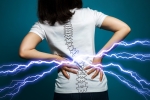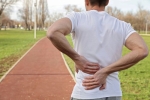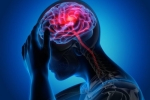Home »
Blog » Pain Management
| Stem Cell, PRP, Acupuncture in Queens & Long Island, New York
Pain Management | Stem Cell, PRP, Acupuncture in Queens & Long Island, New York
Regardless of whether spinal pain originates in the neck, upper back, or lower back, it can become bad enough to reduce your ability to enjoy an active lifestyle. But there are also some aspects that make upper back pain different from neck and lower back pain. Let’s explore 3 of them. 1 - Upper Back Pain Is Less Common - Estimates regarding the prevalence of upper back pain vary widely. However, compared to neck pain and lower back pain, upper back pain is considered relatively rare. One commonly cited reason for less upper back pain is that the thoracic spine has extra support from its attachment to the rib cage, which is critical for protecting vital organs. Meanwhile, the neck and lower back are more mobile and likelier to...
Read more
Most pain subsides after an injury heals or an illness runs its course. But with chronic pain syndrome, pain can last for months and even years after the body heals. It can even occur when there’s no known trigger for the pain. According to the National Center for Complementary and Integrative Health, chronic pain is defined as lasting anywhere from 3 to 6 months, and it affects some 25 million Americans.
Read more
Have a pain problem and wondering if yoga can help? I understand – not just as a doctor, but also as a patient. I took up yoga when I was struggling with a knee problem, well over a decade ago now. While I initially experimented with yoga with the hope that it would improve how my knee felt, I soon discovered that it could help me in much bigger ways, including bettering my mood, teaching me to better manage stress, and just plain helping me smile after a rough day. Frankly, I have found yoga to be so impactful that I can’t imagine going without it – and yes, it did seem to reduce the pain in my knee.
Read more
If you suffer from a lower back condition like a lumbar herniated disc or spinal stenosis your doctor will likely recommend exercise as part of your treatment program. But what should you do if your exercise regimen exacerbates your lower back condition? Should you work through the pain?
Soreness vs. pain related to a lower back condition - Before we talk about whether you should work through your lower back pain, let’s quickly look at the difference between soreness and pain related to a lower back condition. Minor soreness is a natural result of exercise, and it is especially prominent amongst those who are new to exercising.
Read more
Everyone experiences occasional aches and pains. Sudden pain is an important reaction of the nervous system that helps alert you to possible injury. When an injury occurs, pain signals travel from the injured area up to your spinal cord and your brain. The pain will usually become less severe as the injury heals. However, chronic pain is different from typical pain. With chronic pain, your body continues to send pain signals to your brain, even after an injury heals. This can last several weeks to years. Chronic pain can limit your mobility and reduce your flexibility, strength, and endurance. This may make it challenging to get through daily tasks and activities.
Read more
With so many questions right now about the dangers of the coronavirus (COVID-19), you might be wondering how chronic pain might affect the immune system’s ability to fight off disease. Since COVID-19 surfaced a few months ago, we’ve learned that certain people are more susceptible to it than others. Some of the factors that seem to increase the severity of the illness include age, smoking, gender, co-existing chronic medical problems, heart disease, hypertension, diabetes, and underlying lung problems from diseases like COPD. This has led to a general view that those with more compromised immunes systems are more likely to experience the worst coronavirus episodes and a higher mortality rate.
Read more
You've seen all the doctors and specialists, and you've had all the tests—then, at the end of it all, you’ve discovered that your back pain is "chronic." For many, this is an unfortunate reality thanks to conditions that are not easily treated and rarely cured such as degenerative disc disease, spinal stenosis, and spondylolisthesis. Chronic pain from these conditions often follows a pattern of low-level discomfort with intermittent flare-ups of more intense pain.
Read more
A migraine is a type of headache that causes throbbing pain, often on one side of the head. The pain can be severe enough to become disabling. Many people who get migraines also experience symptoms like nausea, vomiting, and sensitivity to light and sound before and during their headaches. If you have more than 15 migraine episodes per month, you may be living with chronic migraine. Having so many severe headaches can have a significant impact on your life. However, medications and other treatments can help reduce the number of migraines you have each month and make the ones you do get less severe.
Read more
As the COVID-19 pandemic continues, patients with chronic diseases can find that stay-at-home orders pose added challenges. In many areas, medical care has been pared down to mostly urgent doctor visits, procedures, surgeries, and diagnostic tests. Many pain patients may find access to medical care or treatment more limited than ever. And stay-at-home orders can also mean spending more time around spouses, family members, or roommates, which can add even more stress to what is already a very high-anxiety situation.
Read more
When your lower back pain flares up, you may reach for ice, heat, or pain-killers to alleviate your symptoms. But have you considered electrotherapy? No single treatment works for everyone, but applying electrotherapy to your lower back may help you find short-term relief from your pain or discomfort.
What is electrotherapy? - Electrotherapy typically involves the use of a battery-powered device that supplies a current to small electrodes (which attach to your back). This in turn sends electrical pulses to the area of your lower back experiencing symptoms. There are numerous kinds of electrotherapy devices available, but the most popular ones are transcutaneous electrical nerve stimulation (TENS) units.
Read more
Love this Post? Spread the World






















